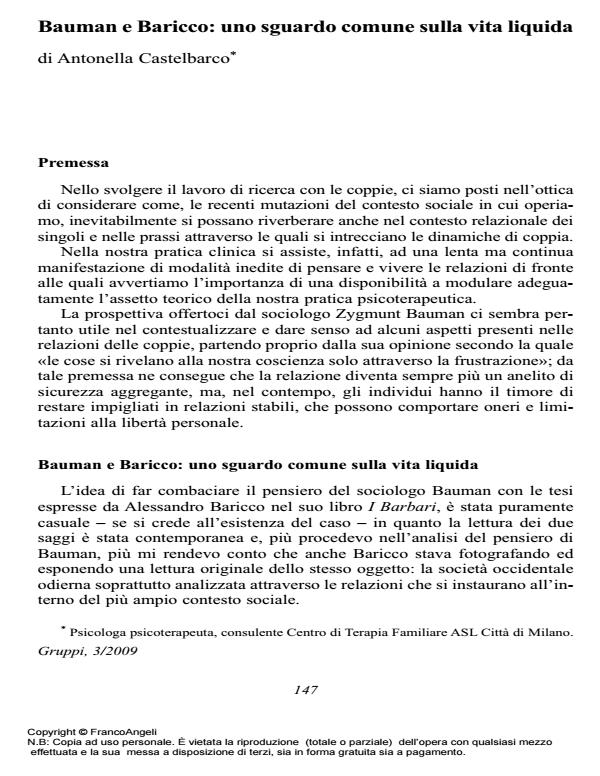Bauman e Baricco: uno sguardo comune sulla vita liquida
Journal title GRUPPI
Author/s Antonella Castelbarco
Publishing Year 2010 Issue 2009/3
Language Italian Pages 6 P. 147-152 File size 276 KB
DOI 10.3280/GRU2009-003009
DOI is like a bar code for intellectual property: to have more infomation
click here
Below, you can see the article first page
If you want to buy this article in PDF format, you can do it, following the instructions to buy download credits

FrancoAngeli is member of Publishers International Linking Association, Inc (PILA), a not-for-profit association which run the CrossRef service enabling links to and from online scholarly content.
Bauman and Baricco: a common view on liquid life - The article stems from considering the swift changes in our current society as factors possibly affecting the clinical context of couple therapy. Bauman’s thesis about "liquid" society and relations (Liquid Love. On the Frailty of Human Bonds, 2003) is compared with the notion expressed by Baricco (I Barbari) as to the onset of new ways of living experiences. The article focuses on such concepts as «the network of flowing systems and fluidity», which appropriately describe the grounding aspects of love relations and which are highlighted by Bauman as typical characteristics of relationships that are more similar to "connections", i.e. condensed and superficial bonds to protect oneself from the risk of love involvement perceived as a form obligation. The changes regard important aspects of life and interpersonal relations such as surface rather than depth, sequence and speed rather than reflection. Generally, the descriptions of both "barbarian" and "liquid" society are based on the assumption of a deep change in the concept of "experience" as well as of a new dislocation in the concept of «sense in the experience».
Keywords: Barbarians, liquid society, connections, speed, movement, sequence
Antonella Castelbarco, Bauman e Baricco: uno sguardo comune sulla vita liquida in "GRUPPI" 3/2009, pp 147-152, DOI: 10.3280/GRU2009-003009